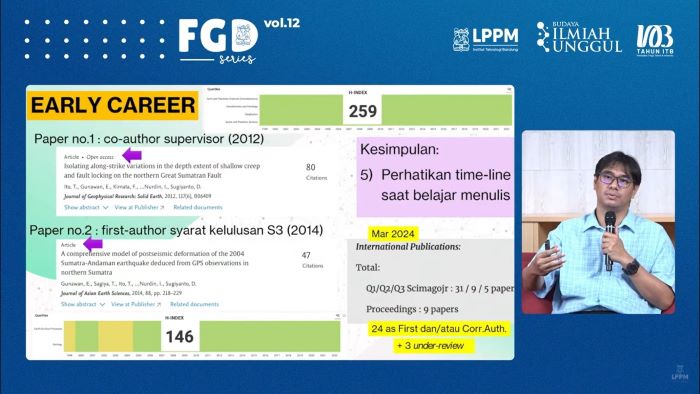Prof. Tatacipta Dirgantara's Story on Interdisciplinary Collaboration in Prosthetic Foot Design
By Adi Permana
Editor Adi Permana

BANDUNG, itb.ac.id—Interdisciplinary collaboration has seen many implementations in Institut Teknologi Bandung. The results are diverse, and in addition to producing research, it also creates products that answer societal needs.
One of the outputs of the collaboration between engineering, science, and art is a prosthetic leg (artificial leg) which the ITB Biomechanics Team successfully patented in 2020. This product came about as a response to the need for a comfortable yet affordable prosthetic knee for people from the middle to lower economic class.
ITB Dean of the Faculty of Mechanical and Aerospace Engineering (FMAE), Prof. Dr. Ir. Tatacipta Dirgantara, M.T., stated that this product is a real result of collaboration between engineering design and industrial design carried out by ITB.
"What we (ITB Biomechanics Team) did first was to learn and understand how the knee kinematics works so that our prosthetic knee could be used to walk like how a normal knee would. Then, in the same year, a Faculty of Arts and Design (FAD) student (Rahma Ari Fauziah) came to volunteer to design the prosthetic knee," Prof. Tata explained during the LPPM ITB Arts and Technology Dialogue titled "Aesthetics and Biomechanics" on Wednesday (18/1/2023).
Unlike the scientific approach taken by the ITB Biomechanics Team, Rahma started to decide on the design from direct observations and interviews with disabled people to find out about design needs from the human side or users.
From this approach, she discovered that users want a prosthetic knee that is more flexible so that it can be used to sit cross-legged and perform salat. The ITB Biomechanics Team then followed up this input with the design refinement of a more aesthetically pleasing and ergonomic prosthetic knee by Rahma.
This collaborative process resulted in a prosthetic knee design that is comfortable and aesthetically pleasing yet still affordable. According to Prof. Tatacipta, this kind of collaboration is needed to respond to various conditions because each field of science cannot produce optimal products by just working alone.
Reporter: Hanifa Juliana (Urban and Regional Planning)
Translator: Hanna Daniela Ayu (Aerospace Engineering, 2021)

.jpg)

.jpg)
.jpg)
.jpg)

